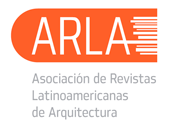EL PENSAMIENTO DE JOSEP LLUÍS SERT RESPECTO AL ARTE DE GRAN FORMATO EN LA OBRA DE JOAN MIRÓ, SU RELACIÓN CON LOS ESPACIOS PÚBLICOS Y LA ARQUITECTURA
Resumen
Que los arquitectos hablen de arte no es algo nuevo, si se tiene en cuenta una de las características principales de la arquitectura, la potencialidad de su materia construida para ser interpretada estéticamente, para ser teorizada, criticada -con mayor o menor acierto- . Lo ya no tan común es hacerlo con la solvencia intelectual del protagonista de primera línea, con capacidad para teorizar y construir, a la vez, la historia del arte y la arquitectura. Ese fue el caso excepcional de Josep Lluís Sert, personaje indispensable para la comprensión del puzzle que significó la arquitectura y el arte moderno a uno y otro lado del Atlántico a lo largo de gran parte del siglo XX. El conocimiento profundo fruto de su amistad y trabajo durante décadas, codo a codo con el artista universal Joan Miró, le convierten en la persona indicada para expresar su opinión sobre uno de los temas comunes que más les apasionaba y en el que coincidían de una manera casi unánime: la imperiosa necesidad de unir arquitectura, arte y paisaje como parte de un todo armónico, que ayudara al hombre moderno a vivir sus ciudades de una manera más alegre y confortable, eso sí, enganchado a la tierra con sus raíces mediterráneas como los algarrobos y olivos que tanto le gustaba pintar a Miró. La comprensión por parte de Sert del arte de gran formato -en algunos casos monumental- de la obra Mironiana fue profunda y consciente, sus colaboraciones en proyectos se hicieron cada vez más intensas y fructíferas, por ello, cuando Sert hablaba del personaje y la obra de Joan Miró, hablaba con la voz de quien tiene la autoridad, del que conoce las verdades que él mismo ha ayudado a edificar. La intención de estas líneas es la de asomarse a un extenso y rico paisaje construido por estos dos personajes fundamentales, que sirva para hacerse una idea del interés que puede llegar a tener en los procesos creativos las interrelaciones entre el arte y la arquitectura.
ABSTRACT
That the architects speak of art is not new, considering one of the main features of the architecture, the potential of his subject aesthetically built to be interpreted to be theorized, criticized - with varying success. What is not so common to do with the intellectual solvency of the protagonist of the first line, and build capacity for theorizing both art history and architecture. That was the exceptional case of Josep Lluís Sert, character essential to understanding the puzzle meant architecture and modern art on either side of the Atlantic throughout much of the twentieth century. Deep knowledge fruit of their friendship and work for decades, side by side with the universal artist Joan Miró, make him the right person to express their views on one of the most common themes that were passionate and in a way that matched almost unanimous: The urgent need to unite architecture, art and landscape as part of a harmonious whole, to help modern man to live their cities in a more cheerful and comfortable, That If hooked to earth with their Mediterranean roots as carob and olive trees he loved painting. Understanding by Sert large format art -sometimes monumental- Miró’s work was profound and consent, their collaborative projects became increasingly intense and fruitful, so when talking about the character and Sert the work of Joan Miró, spoke with the voice of one who has the authority, which knows the truth that it has helped to build. The intent of these lines is to look into a vast and rich landscape built by the two main characters, serving to get an idea of interest can have on the creative process interrelationships between art and architecture.
Referencias
BALSACH, Maria-Josep. Joan Miró: Cosmogonías De Un Mundo Originario (1918- 1939). Barcelona: Galàxia Gutenberg, 2007.
MINGUET I BATLLORI, Joan M. Joan Miró: L’Artista i El Seu Entorn Cultural: (1918- 1983). Barcelona: Publicacions de l’Abadia de Montserrat, 2000.
MIRÓ, Joan, et al. Epistolari Català. Barcelona: Barcino, 2009.
MIRÓ, Joan; PRÉVERT, Jacquesand ÁLVAREZ GONZÁLEZ, Julio. Joan Miró: Pintures i Escultures 1949-1979. Exposición Mayo-Junio 1999: Centre Cultural Fontana d’Or De Caixa De Girona. Barcelona, 1998.
SERT, Josep L., 1902-1983. Arquitectura De Sert En La Fundació Miró. Barcelona: Polígrafa, 1977.







